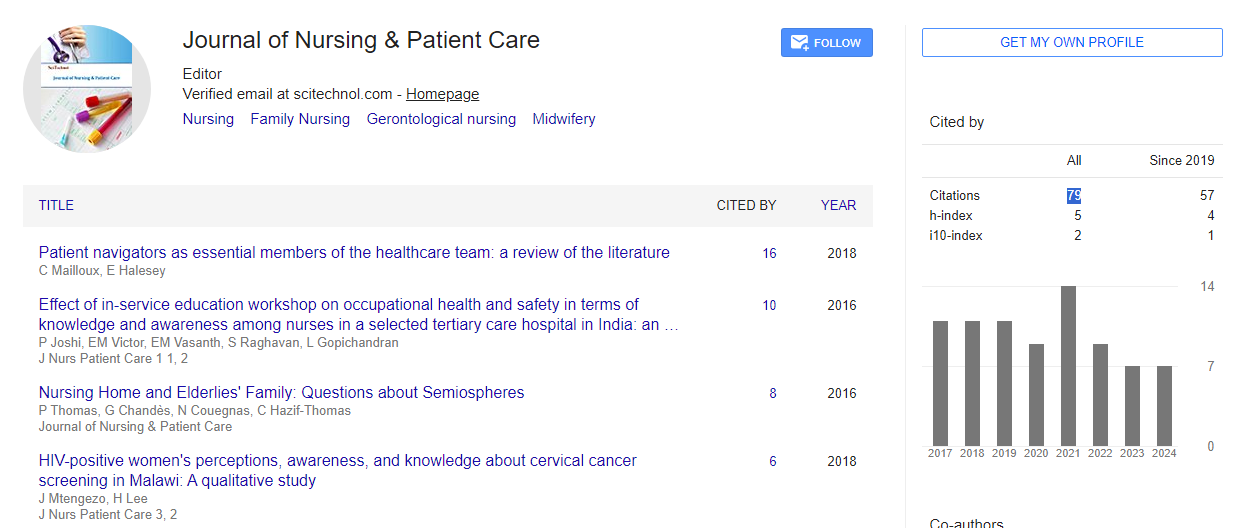Assessment of perceived stress and associated factors among adolescents of g.c.e advance level classes in the divisional secretariat area of Wennappuwa, Sri Lanka
Perera Ishaka and Suresh S
University of Sri Jayewardenepura, Sri Lanka
University of Sri Jayewardenepura, Sri Lanka
: J Nurs Patient Care
Abstract
Background: Adolescents correspond to the period between the ages of 10-19 years and it represents a critical phase of biological, social and psychological transitions. Most of parents are working in Italy, especially in Wennappuwa area. Many researchers have found that demands for educational achievements, parental and family factors and romantic relationships are the major stressors among adolescents which may lead them to engage in high risk behaviours such as alcohol and substance abuse and unprotected casual sexual relationships which might end up in teenage pregnancies and sexually transmitted infections. Aim: To assess the level of stress, stressful life events, associated factors and coping strategies of stress among students of G.C.E. Advanced Level classes in divisional secretariat area of Wennappuwa. Method: A cross-sectional descriptive study was carried out with 360 students by simple random method (180=female, 180=male) who completed the Stress Tolerance Questionnaire. The questionnaire comprised checklists for stressors. Demographic data too were collected. Stress tolerance was calculated; using Cohen perceived stress scale and participants were divided into high or normal stress groups. Statistical differences were determined by Chi-Squared and Student’s t tests. Results: Among the participants, 32.2% of male and 38.9% of female students were under stress. However, this difference was not statistically significant (p>0.05). A higher incidence of stress was seen among students who were having sexual relationship issues (3.9%) and love affairs (16.7%). Interestingly, the students who were worried for not having a love affair (9.2%) were also stressed (p<0.05). The other significantly related factors were not having a good relationship with parents (6.1%), parental neglect (6.7%) and over involvement (16.1%). If a student was an only child, his or her stress was less compared with students who had siblings; however it was not statistically significant. Six lifestyle/coping strategies (out of 16) were significantly associated with high stress tolerance. Except students who perceived relaxation techniques(49.2%) positive thinking(59.2%), watching movies(62.2%), more organized with time(28.1%), being constructive with problems(69.2%) and being more assertive(58.1%) as coping methods majority of others were stressed and the difference was statistically significant (p0.05). Conclusion: Stress is an issue among the students in the G.C.E. Advanced Level classes. The negative family environment and love affairs lead to higher levels of stress in school adolescents. Students counselling and parental educational sessions are recommended to reduce the unnecessary stress in this group of students.
Biography
Ishaka Perera is working at the University of Sri Jayewardanpura, Sri Lanka. ishaperera92@gmail.com
 Spanish
Spanish  Chinese
Chinese  Russian
Russian  German
German  French
French  Japanese
Japanese  Portuguese
Portuguese  Hindi
Hindi 